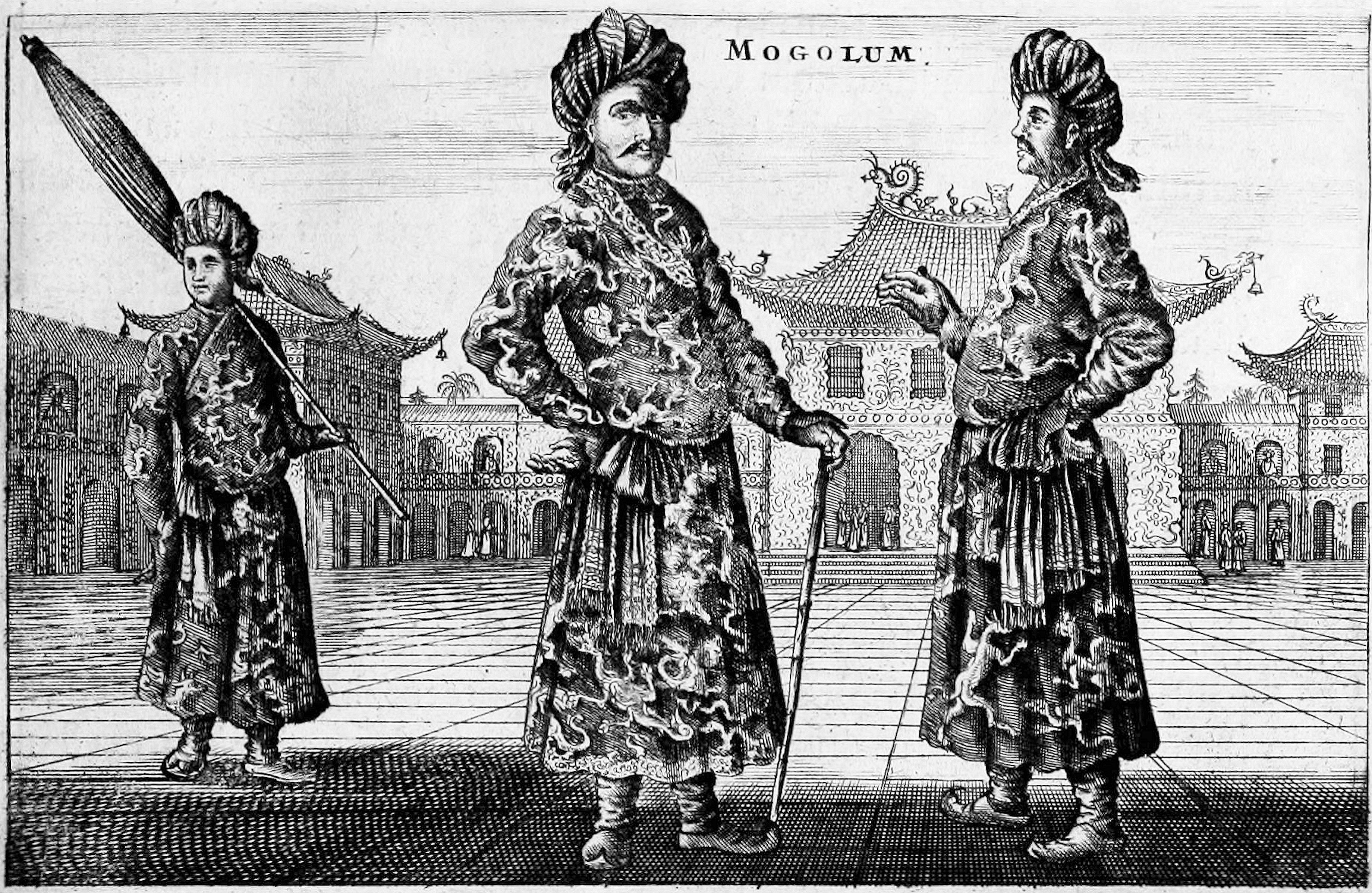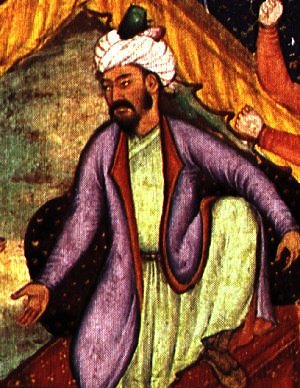|
Buyan Suldus
Buyan Suldus (died 1362) was chief of one segment of the Suldus clan of Taichuud tribe during the 1350s and 1360s, and was chief amir of the Chagatai ''ulus'' for a short time after 1358. Although did not control the entire Suldus tribe, Buyan was its most powerful chief. He was the leader of the Suldus in Shadman and Chaghaniyan. When the Qara'unas Amir Qazaghan killed Qazan Khan and took effective control of the Chagatai Khanate in 1346, his base of power was in the southern portion of the ''ulus''; he mostly left the northern tribes alone. Despite the fact that the Suldus were considered a northern tribe, Buyan did cooperate with Qazaghan on occasion. During Qazaghan's punitive expedition against the Kartids in 1351, for example, he was the only leader of a northern tribe to participate. His attitude changed, however, when Qazaghan was killed in 1358 and was succeeded by his son, ‘Abdullah. ‘Abdullah wanted greater control over the northern tribes and, for this reason, m ... [...More Info...] [...Related Items...] OR: [Wikipedia] [Google] [Baidu] |
Suldus
The Tayichiud (Mongolian Cyrillic: –¢–∞–π—á—É—É–¥, Taichuud) was one of the three core tribes of the Khamag Mongol confederation on the Mongolian Plateau during the 12th century, founded by Ambaghai Khan in 1148 CE, and finally ended with Sultan Husayn Tayichud in 1405 AD. Tribal arrangements They lived in the southern part of current Zabaykalsky Krai and the Mongolian Dornod Province. Though the Khiyad Borjigids and the Tayichiuds were closely related and shared a common ancestor in Bodonchar Munkhag, at times they were arch-rivals for the rule of the Khamag Mongol. Though Khabul Khan of the Borjigin had 7 sons, he had designated Ambaghai, a son of Sengum Bilge of the Tayichiud, as his successor. Thus Ambaghai Khan became the second khan of the Khamag Mongol. The rule of the Mongols had alternated between the Borjigid and the Tayichiud tribes, finally coming into the hands of Genghis Khan of Borjigid. Role The Tayichiud were rivals of the Naimans and several other tribes. ... [...More Info...] [...Related Items...] OR: [Wikipedia] [Google] [Baidu] |
Hajji Beg
Hajji Beg Barlas, Hajji Beg or, Hajji Barlas (Persian: حاجی بیگ بارلاس, b. Early 14th Centuryd. 1361) was a leader of the Barlas tribe. he was the immediate predecessor in this role to his nephew Timur, who later founded the Timurid Empire, he was the son of Burlaki Barlas whose lineage from Qarachar's second younger son Yesunte Möngke the Mongol Military Commander, he was given Hajji title of his surname because he pilgrimages to Mecca his real name "Saif al-din Barlas". Barlas Background Hajji Beg was a member of the Barlas tribe and was descendent from Qarachar Noyan through his son Yesunte Möngke his son Nemule Barlas his son Burlaki Barlas his son Hajji Barlas, Qarachar one of the Mongol Greats assigned by Genghis Khan to his son Chagatai. Hajji Beg and Timur shared a common ancestor to Qarachar, through they descended from different sons. his father Burlaki Barlas was accepted to Islam so he was born Muslim family and he later from adulthood he Pilg ... [...More Info...] [...Related Items...] OR: [Wikipedia] [Google] [Baidu] |
Badakhshan
Badakhshan is a historical region comprising parts of modern-day north-eastern Afghanistan, eastern Tajikistan, and Taxkorgan Tajik Autonomous County in China. Badakhshan Province is one of the 34 provinces of Afghanistan. Much of historic Badakhshan lies within Tajikistan's Gorno-Badakhshan Autonomous Region, in the southeastern part of the country. The music of Badakhshan is an important part of the region's cultural heritage. Name The name "Badakhshan" ( fa, بدخشان, ''Badaxšân''; ps, بدخشان; tg, Бадахшон, ''Badaxşon''; ) is derived from the Sasanian official title ''bēdaxš'' or ''badaxš'', which may be from an earlier *pati-axša; the suffix -''ān'' indicates that the country belonged, or had been assigned as a fief, to a person holding the rank of a '' badaxš''. People Badakhshan has a diverse ethnolinguistic and religious community. Tajiks and Pamiris are the majority while a tiny minority of Kyrgyzs and Uzbeks also are found in their ... [...More Info...] [...Related Items...] OR: [Wikipedia] [Google] [Baidu] |
Timur
Timur ; chg, ''Aqsaq Temür'', 'Timur the Lame') or as ''Sahib-i-Qiran'' ( 'Lord of the Auspicious Conjunction'), his epithet. ( chg, ''Temür'', 'Iron'; 9 April 133617–19 February 1405), later Timūr Gurkānī ( chg, ''Temür Küregen''), was a Turco-Mongol conqueror who founded the Timurid Empire in and around modern-day Afghanistan, Iran, and Central Asia, becoming the first ruler of the Timurid dynasty. An undefeated commander, he is widely regarded as one of the greatest military leaders and tacticians in history, as well as one of the most brutal. Timur is also considered a great patron of art and architecture as he interacted with intellectuals such as Ibn Khaldun, Hafez, and Hafiz-i Abru and his reign introduced the Timurid Renaissance. Born into the Barlas confederation in Transoxiana (in modern-day Uzbekistan) on 9 April 1336, Timur gained control of the western Chagatai Khanate by 1370. From that base, he led military campaigns across Western, South, and ... [...More Info...] [...Related Items...] OR: [Wikipedia] [Google] [Baidu] |
Transoxiana
Transoxiana or Transoxania (Land beyond the Oxus) is the Latin name for a region and civilization located in lower Central Asia roughly corresponding to modern-day eastern Uzbekistan, western Tajikistan, parts of southern Kazakhstan, parts of Turkmenistan and southern Kyrgyzstan. Geographically, it is the region between the rivers Amu Darya to its south and the Syr Darya to its north. Historically known in Persian as ( fa, فرارود, – 'beyond the muriver'), ( tg, Фарорӯд) and ( tg, Варазрӯд), the area had been known to the ancient Iranians as Turan, a term used in the Persian national epic ''Shahnameh''. The corresponding Chinese term for the region is ''Hezhong'' (). The Arabic term ( ar, ما وراء النهر, – 'what is beyond the ayhūnriver') passed into Persian literary usage and stayed on until post-Mongol times. The region was one of the satrapies (provinces) of the Achaemenid Empire of Persia under the name Sogdia. It was defined wi ... [...More Info...] [...Related Items...] OR: [Wikipedia] [Google] [Baidu] |
Tughluq Temur
Tughlugh Timur Khan (also Tughluq Tömür or Tughluk Timur) (1312/13–1363) was the Khan of Moghulistan from c. 1347 and Khan of the whole Chagatai Khanate from c. 1360 until his death. Esen Buqa (a direct descendant of Chagatai Khan) is believed to be his father. His reign is known for his conversion to Islam and his invasions of Transoxiana. Background After the Chagatayid Qazan Khan was killed in 1346, the Chagatai Khanate underwent a transformation. In the west (Transoxiana), the mostly Turko-Mongol tribes, led by the Qara'unas amirs, seized control. In order to maintain a link to the house of Genghis Khan, the amirs set several of his descendants on the throne, though these khans ruled in name only and had no real power. The eastern part of the khanate, meanwhile, had been largely autonomous for several years as a result of the khans' weakening power. This eastern portion (most of which was known as "Moghulistan") was, in contrast to Transoxiana, primarily inhabited by Mo ... [...More Info...] [...Related Items...] OR: [Wikipedia] [Google] [Baidu] |
Moghulistan
Moghulistan (from fa, , ''Moghulest√¢n'', mn, –ú–æ–≥–æ–ª–∏—Å—Ç–∞–Ω), also called the Moghul Khanate or the Eastern Chagatai Khanate (), was a Mongol breakaway khanate of the Chagatai Khanate and a historical geographic area north of the Tengri Tagh mountain range, on the border of Central Asia and East Asia. That area today includes parts of Kazakhstan, Kyrgyzstan, and northwest Xinjiang, China. The khanate nominally ruled over the area from the mid-14th century until the late 17th century. Beginning in the mid-14th century a new khanate, in the form of a nomadic tribal confederacy headed by a member of the family of Chagatai, arose in the region of the Ili River. It is therefore considered to be a continuation of the Chagatai Khanate, but it is also referred to as the Moghul Khanate. In actuality, local control rested with local Mongol Dughlats or Sufi Naqshbandi in their respective oases. Although the rulers enjoyed great wealth from the China trade, it was beset by const ... [...More Info...] [...Related Items...] OR: [Wikipedia] [Google] [Baidu] |
Barlas
The Barlas ( mn, Barulās, script=Latn;Grupper, S. M. ‘A Barulas Family Narrative in the Yuan Shih: Some Neglected Prosopographical and Institutional Sources on Timurid Origins.’ Archivum Eurasiae Medii Aevi 8 (1992–94): 11–97 Chagatay/ fa, برلاس ''Barlās''; also ''Berlās'') were a Mongol and later TurkicizedB.F. Manz, ''The rise and rule of Tamerlan'', Cambridge University Press, Cambridge 1989, p. 28: ''"... We know definitely that the leading clan of the Barlas tribe traced its origin to Qarachar Barlas, head of one of Chaghadai's regiments ... These then were the most prominent members of the Ulus Chaghadai: the old Mongolian tribes — Barlas, Arlat, Soldus and Jalayir ..."''M.S. Asimov & C. E. Bosworth, ''History of Civilizations of Central Asia'', UNESCO Regional Office, 1998, , p. 320: ''"... One of his followers was ..Timur of the Barlas tribe. This Mongol tribe had settled ..in the valley of Kashka Darya, intermingling with the Turkish population, ... [...More Info...] [...Related Items...] OR: [Wikipedia] [Google] [Baidu] |
Samarkand
fa, سمرقند , native_name_lang = , settlement_type = City , image_skyline = , image_caption = Clockwise from the top:Registan square, Shah-i-Zinda necropolis, Bibi-Khanym Mosque, view inside Shah-i-Zinda, Sher-Dor Madrasah in Registan, Timur's Mausoleum Gur-e-Amir. , image_alt = , image_flag = , flag_alt = , image_seal = Emblem of Samarkand.svg , seal_alt = , image_shield = , shield_alt = , etymology = , nickname = , motto = , image_map = , map_alt = , map_caption = , pushpin_map = Uzbekistan#West Asia#Asia , pushpin_map_alt = , pushpin_mapsize = 300 , pushpin_map_caption = Location in Uzbekistan , pushpin_label_position = , pushpin_relief = 1 , coordinates = , coor_pinpoint = , co ... [...More Info...] [...Related Items...] OR: [Wikipedia] [Google] [Baidu] |
Taichuud
The Tayichiud (Mongolian Cyrillic alphabet, Mongolian Cyrillic: –¢–∞–π—á—É—É–¥, Taichuud) was one of the three core tribes of the Khamag Mongol confederation on the Mongolian Plateau during the 12th century, founded by Ambaghai Khan in 1148 CE, and finally ended with Sultan Husayn Tayichiud, Sultan Husayn Tayichud in 1405 AD. Tribal arrangements They lived in the southern part of current Zabaykalsky Krai and the Mongolian Dornod Province. Though the Kiyat, Khiyad Borjigids and the Tayichiuds were closely related and shared a common ancestor in Bodonchar Munkhag, at times they were arch-rivals for the rule of the Khamag Mongol. Though Khabul Khan of the Borjigin had 7 sons, he had designated Ambaghai, a son of Sengum Bilge of the Tayichiud, as his successor. Thus Ambaghai, Ambaghai Khan became the second khan of the Khamag Mongol. The rule of the Mongols had alternated between the Borjigid and the Tayichiud tribes, finally coming into the hands of Genghis Khan of Borjigid. Role ... [...More Info...] [...Related Items...] OR: [Wikipedia] [Google] [Baidu] |
‘Abdullah (Chagatai Khanate)
Abdullah (died c. 1359) was the leader of the Qara'unas (1358–1359) and the ruler of the Chagatai ''ulus'' (1358). He was the son of Amir Qazaghan. After Qazaghan had taken control of the Chagatai ''ulus'' in around 1346, he appointed Abdullah as governor of Samarkand. During his father's lifetime, Abdullah led an expedition against Khwarazm, although Qazaghan had been against it. When the latter died in 1358 Abdullah succeeded him. Unlike his father, he had an active interest in the tribes of the northern part of the ''ulus''. Qazaghan, whose power base had been in the southern portion of the ''ulus'', had tended to leave the northern tribes alone; Abdullah was not content to do the same. The northern tribes bitterly resented his attempts to curtail their power. Abdullah's decision to keep his capital in Samarkand proved to be his undoing. The Barlas and Suldus tribes, both located near the city, hated the prospect of a strong Qara'unas presence in their immediate vicinity. To ... [...More Info...] [...Related Items...] OR: [Wikipedia] [Google] [Baidu] |







